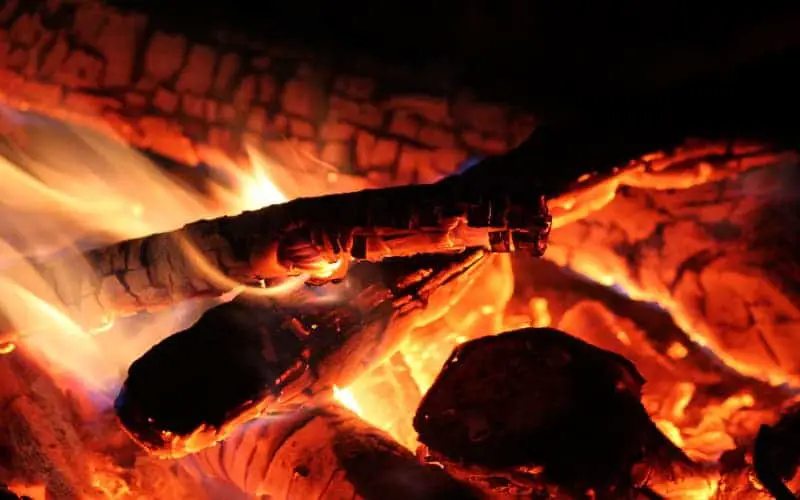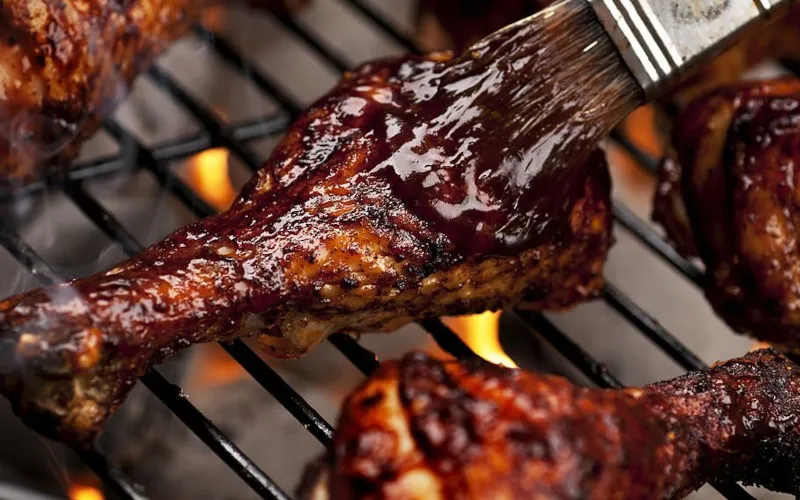Few things can beat getting dressed up to go to a swanky steak restaurant for a special occasion because you are sure to enjoy a great meal and cocktails with friends. In this regard, ribeye and sirloin are some of the most well-known and most loved cuts of steak. Even so, deciding between them has never been an easy task.
Considering that we all walk into steakhouses with different needs and expectations, the best steak for you depends on several factors. Both the ribeye and sirloin are excellent steaks but still with distinguishing characteristics.
If you are confused between sirloin and ribeye, this post will discuss everything you need to know about the two types of steak to help you decide which cut to purchase next.
What is Sirloin?
The sirloin is a larger subprimal cut that comes from the hip area of a cow between the short loin and round. Notably, sirloin is a large cut of steak that is often separated into several other cuts of steak, including top sirloin, T-bone steak, and roasts.
Compared to ribeye, sirloin is much leaner, with high protein and low-fat content, so it isn’t as heavily flavored and as tender as ribeye. It is packed with beefy flavor and a characteristic chew without being tough.
The top sirloin is one of the most beloved sirloin cuts. One of the interesting things about the top sirloin is that it cooks up quickly and easily, still with a robust deep flavor.
Overall, sirloin is an excellent option if you want a tender, leaner, and flavorsome steak.
Of significance, you can find sirloin steak advertised as New York Strip, Kansas City strip, Omaha strip, or club steak in the US.
What is Ribeye?
Ribeye steak is one of the most premium cuts you can get in an expensive steak restaurant. Technically known as Spinalis Dorsi, ribeye is a cut taken from the rib primal, particularly from rib six through twelve. Many people love it as it combines a healthy dose of marbling with a sizable fillet of the tender longissimus Dorsi muscle.
Although ribeye is fattier than other steaks, it remains moist during cooking and provides an insane amount of flavor relative to other cuts. The fattiness burns up when cooked, turning the cuts into smooth, rich, and unquestionably beefy and juicy steak.
The characteristic that sets ribeye apart is marbling – the broad ribbons of intramuscular fat usually seen running through the steak. This fat breaks down during cooking; therefore, tenderizing the meat and giving it the texture and enduring appeal it’s known for.
Unlike sirloin, ribeyes can be bought with or without the bone. You can find ribeye advertised as Delmonico, Spencer, beauty steak, or Scotch fillet in various steakhouses.
Which is Better – Sirloin or Ribeye?
Both the sirloin and ribeye are excellent cuts that, when cooked properly, deliver juicy, tender, and beefy results. That said, considering one of these cuts “better” than the other is a subjective choice, which can be influenced by several things.
Here are key areas of comparison:
1. Flavor
Both the sirloin and ribeye are deemed delicious cuts. However, considering that the depth of flavor associated with a certain steak cut is proportional to the amount of fat it contains, it is undeniable that these beloved steak cuts have varying flavors.
Sirloin steak has a noticeably beefy flavor but cannot afford the robust flavor of properly grilled ribeye. The ribeye steak is characterized by more marbling and the fatty spinalis cap that increases the depth of its flavor. Definitely, if you are after sheer beef flavor, then ribeye should be your ultimate choice.
Notably, the fat in sirloin tends to toughen as it cooks, so if you decide to go with this cut, make sure to choose the leanest cut possible. For a more tender and tastier sirloin, you can pick a dry-aged sirloin steak or even use dry-aging bags to age your own steak at home. That way, you will get the best of the two worlds.
2. Appearance
Ribeye comes in a tender texture and several strips of intramuscular fats on its surface. Popularly known as marbling, these fats are responsible for the rich flavors and enduring appeal of the ribeye steak. Ribeye can come with a bone or boneless, depending on how you want your cut to be.
On the other hand, sirloin tends to be a little tougher and less marbled primarily because it comes from a section of the beef that gets a lot of exercises. A good-quality sirloin should be bright red throughout, with very little visible fat.
3. Cost
There is a big difference between the price of sirloin and ribeye from one steakhouse to the next. All in all, the ultimate price for each cut depends on several factors, including where you are buying, the type of sirloin or ribeye cut you are buying, the quality of the beef, and the weight of the steak.
Comparing the price of top sirloin and ribeye, the ribeye typically costs a few dollars per pound. Ribeye cuts are trendy, and considering that beef grading is based on the amount of marbling, it means you will be paying more for the extra marbling on the ribeye.
However, if you are buying a ribeye with a bone, you may find yourself paying less than you would when purchasing a top-quality boneless sirloin cut.
You can save a little money by buying a full sirloin, but you will have to trim it into individual cuts, which requires a bit of skill and practice.
In most cases, it is safe to say that sirloin is easier on your wallet than ribeye. Ribeye cuts are more likely to be rated USDA Prime, ultimately raising the price tag above what many people can reasonably afford. That said, the ultimate price will depend on the weight of the cut, the grade of the beef, how aged the cut is, the demand in your location, where you buy it, and how available a certain steak is available in your local area.
4. Health benefits
Most red meat is loaded with nutrients deemed good for heart health and other crucial body functions. That said, both the ribeye and sirloin are excellent sources of protein, and you can count on either to give you the recommended Daily Value (DV) of fat.
While ribeye has an edge when it comes to delivering the right dose of fat, there are several health benefits linked with eating leaner beef. This makes sirloin a great choice for those looking to reduce fat in their diet without cutting down on steak consumption.
No matter what steak you choose, you also get a good dose of vitamin B12, vitamin B6, phosphorus, zinc, selenium, and iron.
Considering that most people tend to eat more than one serving for every steak cut, it is safe to say that sirloin is the better choice if you are following a low-fat diet. It is a better choice for health-conscious diners.
5. Preparation
Although significantly leaner than a ribeye, when cooked properly, top sirloin steak retains its tenderness and taste without the intense marbling of the fattier Spinalis Dorsi.
From the definitions, it is clear that sirloin and ribeye are distinctively different cuts of steak that can benefit from different preparation techniques. While there are a whole lot of ways you can prepare and cook steaks, you will need to know how to cook these fantastic steaks properly to make them taste their best.
Before cooking either sirloin or ribeye, you should first lay the steak flat in a bag on a cutting board for about 30 minutes at room temperature. This should bring your beef to the ideal temperature for cooking, which ensures it cooks evenly with the delicious pink middle and browned crust. Also, before cooking, remember to season all sides with salt and pepper.
Sirloin’s leaner texture makes it a more versatile cut and a perfect partner for marinades. With or without marinade, it is a wonderful grilling steak.
When grilling sirloin, make sure the cooking grates are thoroughly heated before placing the stake on.
For incredible results, we recommend you lightly oil (extra virgin oil is preferred for enhanced flavor) the exterior of the steak itself rather than brush the grates themselves with oil.
On the grill, cook your steak for 4-5 minutes per side and allow it to rest for another 5 minutes before serving.
In comparison, despite the stellar reputation, ribeye is actually a poor choice for the grill as the high-fat content causes flare-ups. These flare-ups can impart a bitter quality to the surface of the steak. All in all, ribeye can be cooked with care to get perfect results.
Generally, ribeye is best when pan-seared in a heavy skillet. That way, the fat will gradually break down to flavor your steak and aid the exterior gain the much-coveted dark, crispy crust, good for a richer texture.
To pan-sear a ribeye steak, season as desired, heat the skillet over medium heat, then add into it one teaspoon of neutral oil. Next, position your steak in the center of the pan and cook as you turn it every 3-5 minutes until a dark, crispy crust forms. Once cooked, let your steak rest for about 5-10 minutes before serving.
When cooked properly, both the ribeye and sirloin come out succulent. Adding your favorite add-ons will certainly enhance flavor and make your steak taste even richer.
No matter your preparation method, top sirloin steak is better suited for everyday meals because it delivers all the health benefits associated with leaner meat. Ribeye, on the other hand, is best suited for special occasions dinners.
Frequently Asked Questions
Is Sirloin a Good Cut of Steak?
Yes, sirloin steak is often a favorite for many steak lovers. This premium cut comes from the hindquarter and has a stronger, beefier flavor profile.
The top sirloin is the most preferred cut of sirloin as it is lean. When cooked properly, the top sirloin is juicy and moderately tender, making for a tastier steak without a lot of fat.
Is Sirloin Roast the Same as Sirloin Steak?
The sirloin steak and sirloin roast are from the largest muscle of the sirloin. As such, they are the same, only differentiated by how they are prepared.
While the term “roast” does not always refer to how a cut of meat is cooked, in the case of sirloin roast, it precisely refers to roasting sirloin cuts. In most steak restaurants, cuts from the sirloin are available as steaks or as roast.
Why is My Sirloin Tough?
Sirloin cuts are from muscles that get a lot of exercises, meaning it has a low amount of fat to make it tender when cooking. As such, the primary reason why the sirloin steak is tough is that it lacks fats to make it tender. As if that is not enough, the fat in sirloin tends to toughen during preparation.
Is Ribeye a Good Cut of Steak?
Ribeye is an ultra-flavorful steak that is essentially cut prime rib roasts. They are super-fatty, which allows them to remain tender and juicy, even when cooked over very high heat. Although they are not perfect for grilling, they are a perfect choice for steak lovers looking for juicy, beefy flavor.
Why is Ribeye So Expensive?
Ribeye cuts are pricier because of the extra marbling, the broad ribbons of intramuscular fat that give the steak richer flavors and enduring appeal they are known for.
Is Steak Good For Health?
Steaks are excellent sources of proteins and other essential nutrients. Although steak cuts consist of more than one of the recommended servings, the steak should be good for your health in moderation.
Conclusion
When comparing sirloin and ribeye steaks, the ultimate choice will depend on your situation, how much you want to spend, and partly how you want to cook your steak. Both the ribeye and sirloin deliver a beefy flavor. Ribeye has a more robust steak flavor, while the sirloin is better for health-conscious diets.





